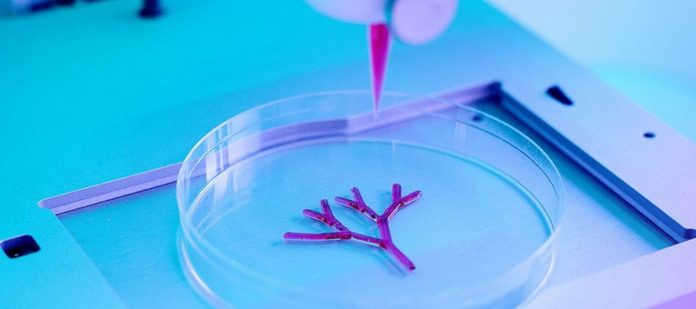Bioprinting is 3D printing with organic cells as ink. The technology is mostly used for medical research and regenerative medicine, but some scientists are now using it to help restore ecosystems in nature and make biofuels as well. Wherever and however it is applied, bioprinting will likely be a core element of life-saving solutions, as well as planet-saving initiatives, within this century.
In the medical field, teams of scientists from different institutions around the world have been developing ways to produce bone, muscles, living tissue, blood vessels (vascularized tissue), cartilage, and whole organs – all for use in testing new drugs, practicing medical procedures, and eventually organ transplantation. Meanwhile, bioprinting is also being used to help address the problem of coral bleaching with a group of Cambridge researchers fabricating biocompatible synthetic coral that’s even more algae-friendly than its natural equivalent.
How do they make the ink?
Bio-ink for human body parts requires a sample of cells from a patient. The cells are then cultivated in the lab until they multiply enough to be loaded into the printer. Sometimes it’s necessary to add adult stem cells, which can develop into any type of cell that’s required. It’s also needed to add an organic or synthetic “glue” that the cells can attach to and grow on – usually a dissolvable gel or collagen scaffold. Some cells don’t need this extra ingredient, but most do. Read more…



